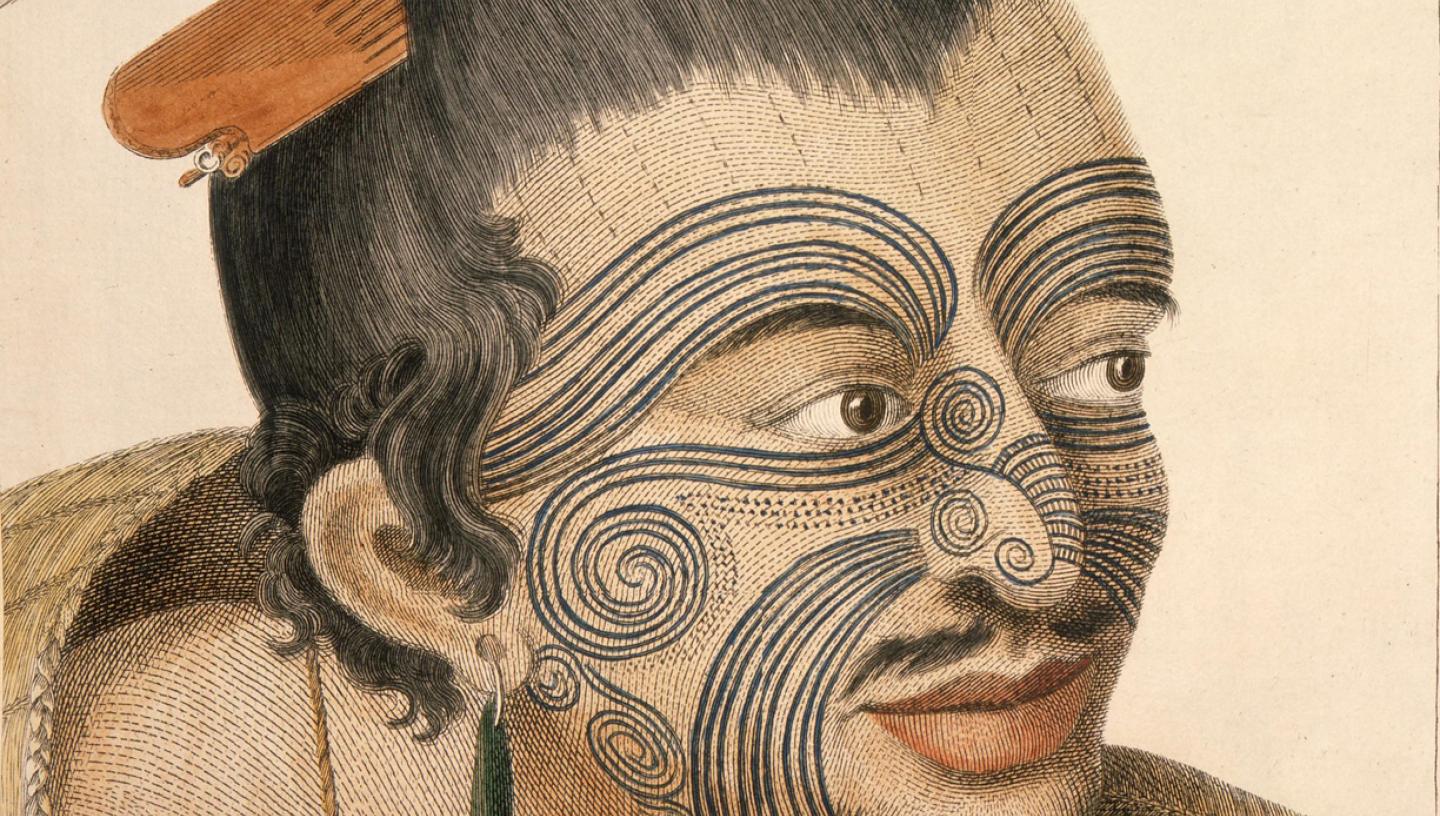
Maori, moko and headhunters
In the late-18th and early-19th centuries collecting tattooed Maori heads became so popular in Europe that many Maoris were murdered to supply the trade.
The Maori people in New Zealand tattooed their heads (moko) and buttocks by chiselling a design into the skin and rubbing ink into it. Moko was chiselled into the face to create permanent grooves in the skin. The face was 'carved' like wood, and then pigmented. The tattoos gave the Maori warrior an intimidating, fearsome appearance. They also displayed the wearer's capacity for pain and endurance.
Each moko had its own design influenced by the wearer's features and signifying their genealogy and hereditary rank.
If one of their chiefs died, they would remove and preserve the tattooed head, keeping it as a treasured possession.
A macabre trade
Europeans considered these heads to be curiosities and before long a trade sprang up, with the Maori exchanging heads for firearms. Soon the Maori began to trade the heads of their enemies killed in battle, but when demand started to exceed supply, men began to be murdered in cold blood for their tattoos. In some cases, slaves were tattooed so that their heads could be cut off and sold.
Governor Darling of New South Wales took steps to outlaw the practice in 1831.
As a child Patuone, a Nga Puhi leader, peacemaker, trader and government adviser claimed to have seen James Cook's ship near Cape Brett in the Bay of Islands around 1769.
'I looked upon the faces of the strange people' he said in old age 'and I wondered greatly'.
He was present in 1840 at the signing of the Treaty of Waitangi and is remembered as both a warrior and a peace-maker between the Maori and the Europeans.
The beard which covers his moko, and the British army cap on the table next to him indicate that he worked closely with Europeans and affected their style of dress, but his cloak and Maori staff of office show that this leader moved between two worlds.
Tomika Te Mutu
Enraged by the unjust arrest of an important Maori leader, Tomika Te Mutu, a chief of the Ngai te rangi tribe, travelled in angry protest to Auckland in the 1850s alongside other chiefs from his area. It is possible that Te Mutu who stares directly at the camera with a look of defiance had this photograph commissioned at one of the new photographic studios in Auckland. His distinct moko and clean-shaven face indicate his undisputed status as a Maori warrior.